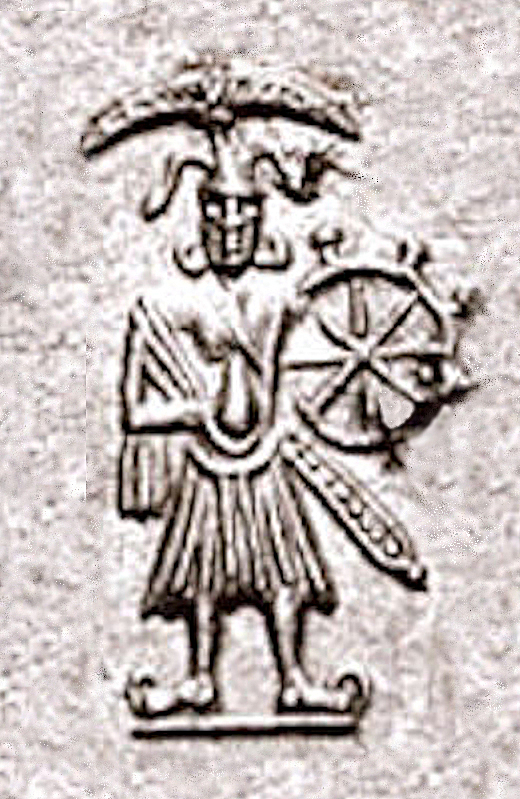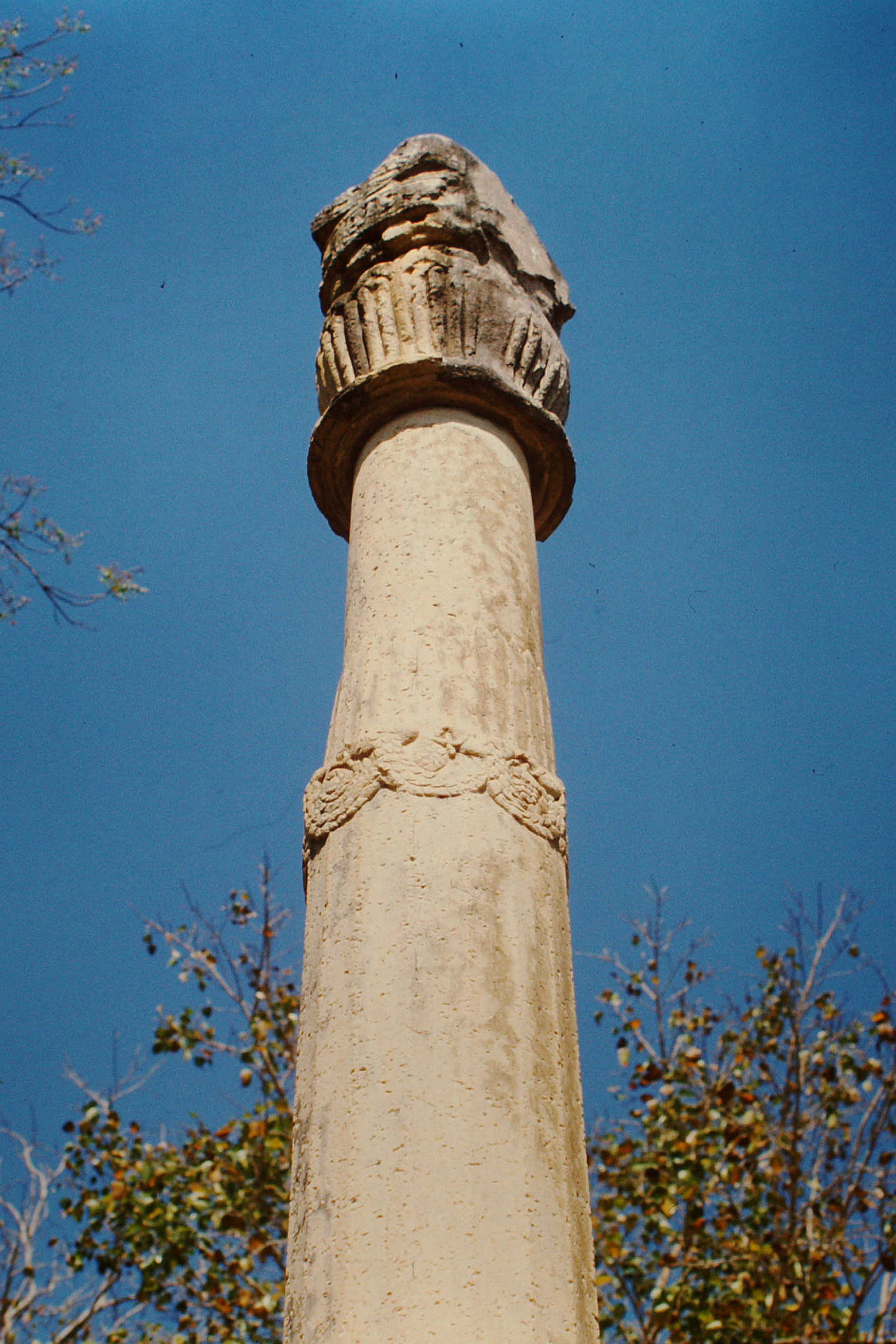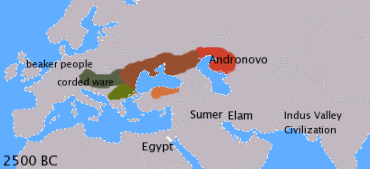|
Vaishnavite
Vaishnavism ( sa, वैष्णवसम्प्रदायः, Vaiṣṇavasampradāyaḥ) is one of the major Hindu denominations along with Shaivism, Shaktism, and Smartism. It is also called Vishnuism since it considers Vishnu as the sole supreme being leading all other Hindu deities, i.e. '' Mahavishnu''. Its followers are called Vaishnavites or ''Vaishnava''s (), and it includes sub-sects like Krishnaism and Ramaism, which consider Krishna and Rama as the supreme beings respectively. According to a 2010 estimate by Johnson and Grim, Vaishnavism is the largest Hindu sect, constituting about 641 million or 67.6% of Hindus. The ancient emergence of Vaishnavism is unclear, and broadly hypothesized as a fusion of various regional non-Vedic religions with Vishnu. A merger of several popular non-Vedic theistic traditions, particularly the Bhagavata cults of Vāsudeva-krishna and ''Gopala-Krishna'', and Narayana, developed in the 7th to 4th century BCE. It was integrated ... [...More Info...] [...Related Items...] OR: [Wikipedia] [Google] [Baidu] |
Ramanuja
Ramanuja (Middle Tamil: Rāmāṉujam; Classical Sanskrit: Rāmanuja; 1017 CE – 1137 CE; ; ), also known as Ramanujacharya, was an Indian Hindu philosopher, guru and a social reformer. He is noted to be one of the most important exponents of the Sri Vaishnavism tradition within Hinduism. His philosophical foundations for devotionalism were influential to the Bhakti movement. Ramanuja's guru was Yādava Prakāśa, a scholar who according to tradition belonged to the Advaita Vedānta tradition, but probably was a Bhedabheda scholar. Sri Vaishnava tradition holds that Ramanuja disagreed with his guru and the non-dualistic Advaita Vedānta, and instead followed in the footsteps of Tamil Alvārs tradition, the scholars Nāthamuni and Yamunāchārya. Ramanuja is famous as the chief proponent of Vishishtadvaita subschool of Vedānta, and his disciples were likely authors of texts such as the Shatyayaniya Upanishad. Ramanuja himself wrote influential texts, such as bhāsya on t ... [...More Info...] [...Related Items...] OR: [Wikipedia] [Google] [Baidu] |
Vāsudeva
Vāsudeva ( sa, वासुदेव, ), later incorporated as Vāsudeva-Krishna (, "Krishna, son of Vasudeva"),"While the earliest piece of evidence do not yet use the name Krsna...." in Krishna-Vāsudeva or simply Krishna, was the son of Vasudeva Anakadundubhi, king of the Vrishnis in the region of Mathura. He was a leading member of the Vrishni heroes, and may well have been an historical ruler in the region of Mathura.Vāsudeva and Krishna "may well have been kings of this dynasty as well" in Vāsudevism arose with the decline of Vedism in India, which occurred during the 8th to 6th century BCE. Vāsudeva then became the object of one of the earliest forms of personal deity worship in India, and is attested from around the 4th century BCE. At that time, Vāsudeva was already considered as a deity, as he appears in Pāṇini's writings in conjunction with Arjuna as an object of worship, since Pāṇini explains that a ''vāsudevaka'' is a devotee (''bhakta'') of Vāsu ... [...More Info...] [...Related Items...] OR: [Wikipedia] [Google] [Baidu] |
Hindu Denominations
Hindu denominations, '' sampradayas'', traditions, movements, and sects are traditions and sub-traditions within Hinduism centered on one or more gods or goddesses, such as Vishnu, Shiva, Shakti and so on. The term ''sampradaya'' is used for branches with a particular founder- guru with a particular philosophy. Hinduism has no central doctrinal authority and many practising Hindus do not claim to belong to any particular denomination or tradition. Four major traditions are, however, used in scholarly studies: '' Vaishnavism'', '' Shaivism'', '' Shaktism'' and '' Smartism''.Lance Nelson (2007), An Introductory Dictionary of Theology and Religious Studies (Editors: Orlando O. Espín, James B. Nickoloff), Liturgical Press, , pages 562–563 These are sometimes referred to as the denominations of Hinduism, and they differ in the primary deity at the centre of the tradition.SS Kumar (2010), Bhakti — the Yoga of Love, LIT Verlag Münster, , pp. 35–36. A notable feature of Hindu ... [...More Info...] [...Related Items...] OR: [Wikipedia] [Google] [Baidu] |
Krishnaism
Krishnaism (IAST: ''Kṛṣṇaism'') is a large group of independent Hindu traditions—sampradayas related to Vaishnavism—that center on the devotion to Krishna as '' Svayam Bhagavan'', ''Ishvara'', ''Para Brahman'', the source of all reality, who is not an avatar of Vishnu. This is its difference from such Vaishnavite groupings as Sri Vaishnavism, Sadh Vaishnavism, Ramaism, Radhaism, Sitaism etc. There is also a personal Krishnaism, that is devotion to Krishna outside of any tradition and community, as in the case of the saint-poet Meera Bai. Leading scholars do not define Krishnaism as a suborder or offshoot of Vaishnavism, considering it a parallel and no less ancient current of Hinduism. The teachings of the ''Bhagavad Gita'' can be considered as the first Krishnaite system of theology. Krishnaism originated in the late centuries BCE from the followers of the heroic Vāsudeva Krishna, which amalgamated several centuries later, in the early centuries CE, with the worshi ... [...More Info...] [...Related Items...] OR: [Wikipedia] [Google] [Baidu] |
Krishna
Krishna (; sa, कृष्ण ) is a major deity in Hinduism. He is worshipped as the eighth avatar of Vishnu and also as the Supreme god in his own right. He is the god of protection, compassion, tenderness, and love; and is one of the most popular and widely revered among Indian divinities. Krishna's birthday is celebrated every year by Hindus on Krishna Janmashtami according to the lunisolar Hindu calendar, which falls in late August or early September of the Gregorian calendar. The anecdotes and narratives of Krishna's life are generally titled as ''Krishna Leela''. He is a central character in the ''Mahabharata'', the '' Bhagavata Purana'', the '' Brahma Vaivarta Purana,'' and the '' Bhagavad Gita'', and is mentioned in many Hindu philosophical, theological, and mythological texts. They portray him in various perspectives: as a god-child, a prankster, a model lover, a divine hero, and the universal supreme being. Quote: "Krsna's various appearances as ... [...More Info...] [...Related Items...] OR: [Wikipedia] [Google] [Baidu] |
History Of Hinduism
The history of Hinduism covers a wide variety of related religious traditions native to the Indian subcontinent. It overlaps or coincides with the development of religion in the Indian subcontinent since the Iron Age, with some of its traditions tracing back to prehistoric religions such as those of the Bronze Age Indus Valley civilisation. It has thus been called the "oldest religion" in the world. Scholars regard Hinduism as a synthesis of various Indian cultures and traditions, with diverse roots and no single founder. This Hindu synthesis emerged after the Vedic period, between ca. 500–200 BCE and ca. 300 CE, in the period of the Second Urbanisation and the early classical period of Hinduism, when the Epics and the first Purānas were composed. It flourished in the medieval period, with the decline of Buddhism in India. The history of Hinduism is often divided into periods of development. The first period is the pre-Vedic period, which includes the Indus Valley Civili ... [...More Info...] [...Related Items...] OR: [Wikipedia] [Google] [Baidu] |
Jagannath
Jagannath ( or, ଜଗନ୍ନାଥ, lit=Lord of the Universe, Jagannātha; formerly en, Juggernaut) is a deity worshipped in regional Hindu traditions in India and Bangladesh as part of a triad along with his brother Balabhadra, and sister, Subhadra. Jagannath, within Odia Hinduism, is the supreme god, '' Purushottama'', and the '' Para Brahman''. To most Vaishnava Hindus, particularly the Krishnaites, Jagannath is an abstract representation of Krishna, or Vishnu, sometimes as the avatar of Krishna or Vishnu. To some Shaiva and Shakta Hindus, he is a symmetry-filled tantric form of Bhairava, a fierce manifestation of Shiva associated with annihilation. The Jagannathism ( Odia Vaishnavism) — the particular sector of Jagannath as a major deity — emerged in the Early Middle Ages and later became an independent state regional temple-centered tradition of Krishnaism/Vaishnavism. The idol of Jagannath is a carved and decorated wooden stump with large round eyes an ... [...More Info...] [...Related Items...] OR: [Wikipedia] [Google] [Baidu] |
Origins Of Hinduism
The history of Hinduism covers a wide variety of related religious traditions native to the Indian subcontinent. It overlaps or coincides with the development of religion in the Indian subcontinent since the Iron Age, with some of its traditions tracing back to prehistoric religions such as those of the Bronze Age Indus Valley civilisation. It has thus been called the "oldest religion" in the world. Scholars regard Hinduism as a synthesis of various Indian cultures and traditions, with diverse roots and no single founder. This Hindu synthesis emerged after the Vedic period, between ca. 500–200 BCE and ca. 300 CE, in the period of the Second Urbanisation and the early classical period of Hinduism, when the Epics and the first Purānas were composed. It flourished in the medieval period, with the decline of Buddhism in India. The history of Hinduism is often divided into periods of development. The first period is the pre-Vedic period, which includes the Indus Valley Civili ... [...More Info...] [...Related Items...] OR: [Wikipedia] [Google] [Baidu] |
Venkateswara
Venkateswara, also known by various other names, is a form of the Hindu god Vishnu. Venkateswara is the presiding deity of the Tirumala Venkateswara Temple, located in Tirupati, Sri Balaji District, Andhra Pradesh, India. Etymology Venkateswara literally means, "Lord of Venkata". The word is a combination of the words ''Venkata'' (the name of a hill in Andhra Pradesh) and ''isvara'' ("Lord"). According to the ''Brahmanda'' and '' Bhavishyottara'' Puranas, the word "Venkata" means "destroyer of sins", deriving from the Sanskrit words ''vem'' (sins) and ''kata'' (power of immunity). It is also said that 'Venkata' is a combination of two words: '''ven''' (keeps away) and kata''' (troubles). Venkata means he 'who keeps away troubles' or 'who takes away problems' or such terms in a similar context. Legend Every year, hundreds of thousands of devotees donate a large amount of wealth at the Tirumala Venkateswara Temple at Tirupati, Andhra Pradesh. A legend provides the reason fo ... [...More Info...] [...Related Items...] OR: [Wikipedia] [Google] [Baidu] |
Bhakti Movement
The Bhakti movement was a significant religious movement in medieval Hinduism that sought to bring religious reforms to all strata of society by adopting the method of devotion to achieve salvation. Originating in Tamilakam during 6th century CE, it gained prominence through the poems and teachings of the Vaishnava Alvars and Shaiva Nayanars before spreading northwards. It swept over east and north India from the 15th century onwards, reaching its zenith between the 15th and 17th century CE. The Bhakti movement regionally developed around different gods and goddesses, and some sub-sects were Shaivism ( Shiva), Vaishnavism ( Vishnu), Shaktism ( Shakti goddesses), and Smartism.Wendy Doniger (2009)"Bhakti" ''Encyclopædia Britannica'' Bhakti movement preached using the local languages so that the message reached the masses. The movement was inspired by many poet-saints, who championed a wide range of philosophical positions ranging from theistic dualism of Dvaita to abs ... [...More Info...] [...Related Items...] OR: [Wikipedia] [Google] [Baidu] |
Kalki
Kalki ( sa, कल्कि), also called Kalkin or Karki, is the prophesied tenth and final incarnation of the Hindu god Vishnu. He is described to appear in order to end the Kali Yuga, one of the four periods in the endless cycle of existence (''Krita'') in Vaishnava cosmology. The end of the Kali Yuga states this will usher in the new epoch of Satya Yuga in the cycle of existence, until the Mahapralaya (dissolution of the universe). Kalki is described in the Puranas as the avatar who rejuvenates existence by ending the darkest and destructive period to remove adharma (unrighteousness) and ushering in the Satya Yuga, while riding a white horse with a fiery sword. The description and details of Kalki are different among various Puranas. Kalki is also found in Buddhist texts, for example the '' Kalachakra-Tantra'' of Tibetan Buddhism. The prophecy of the Kalki avatara is also told in Sikh texts. Etymology The name Kalki is derived from ''Kal'', which means "time" (Kal ... [...More Info...] [...Related Items...] OR: [Wikipedia] [Google] [Baidu] |
Hari
Hari ( sa, हरि) is among the primary epithets of the Hindu preserver deity Vishnu, meaning 'the one who takes away' (sins). It refers to the one who removes darkness and illusion, the one who removes all obstacles to spiritual progress. In the ''Rigveda’s'' Purusha Sukta (praise of the supreme cosmic being), Hari is the first and most important name of the supreme Divine Being (whose Sanskrit cognate is Brahman). The second and alternative name of the supreme being is Narayana according to Narayana sukta of the ''Yajurveda''. Within the Hindu tradition, it is often used interchangeably with Vishnu to such an extent that they are considered to be one and the same. The name "Hari" also appears as the 656th name of Vishnu in the Vishnu Sahasranama of the Mahabharata and is considered to be of great significance in Vaishnavism. In the Vedas, it is required to use the mantra "Harih om" before any recitation, just to declare that every ritual we perform is an offerin ... [...More Info...] [...Related Items...] OR: [Wikipedia] [Google] [Baidu] |








.jpg)
